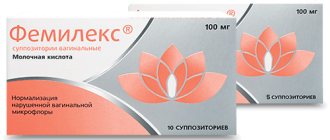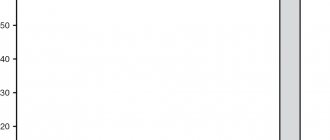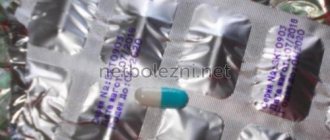To treat digestive problems, preparations based on natural herbs and their extracts are often used. Iberogast is an effective remedy that helps with irritable bowel syndrome and all types of digestive disorders. It relieves acute symptoms of severe gastrointestinal diseases and improves well-being.
Nosological classification (ICD-10)
- K25 Stomach ulcer
- K26 Duodenal ulcer
- K29.7 Gastritis, unspecified
- K31.3 Pylorospasm, not elsewhere classified
- K59.0 Constipation
- K59.1 Functional diarrhea
- K59.9 Functional bowel disorder, unspecified
- R10.1 Pain localized in the upper abdomen
- R10.4 Other and unspecified abdominal pain
- R11 Nausea and vomiting
- R14 Flatulence and related conditions
Overdose and side effects
Cases of overdose of the herbal medicine "Iberogast" are still unknown, but exceeding the dose is not recommended, otherwise complications and other unpleasant symptoms may occur.
Iberogast may cause some side effects:
- digestive disorders (diarrhea, nausea, vomiting);
- dyspnea;
- skin allergies.
If side symptoms occur, you need to visit a doctor and stop taking the drug.
Compound
| Drops for oral administration | 100 ml |
| active substances: | |
| Iberian bitter (Iberis amara L., Cruciferae) whole fresh plant liquid extract (1:1.5–2.5; extractant ethanol 50%) | 15 ml |
| angelica officinalis (Angelica archangelica L., Umbelliferae) dry roots liquid extract (1:2.5–3.5; extractant ethanol 30%) | 10 ml |
| chamomile (Matricaria chamomilla L., Compositae) dried flowers liquid extract (1:2–4; extractant ethanol 30%) | 20 ml |
| caraway seeds (Carum carvi L., Umbelliferae) dried fruit liquid extract (1:2.5–3.5; extractant ethanol 30%) | 10 ml |
| milk thistle (Silybum marianum (L.) Gaertn., Compositae) fruits dry liquid extract (1:2.5–3.5; extractant ethanol 30%) | 10 ml |
| lemon balm (Melissa officinalis L., Labiatae) dry leaves liquid extract (1:2.5–3.5; extractant ethanol 30%) | 10 ml |
| peppermint (Mentha piperita L., Labiatae) dry leaves liquid extract (1:2.5–3.5; extractant ethanol 30%) | 5 ml |
| May celandine (Chelidonium majus L., Papaveraceae) herb dry liquid extract (1:2.5–3.5; extractant ethanol 30%) | 10 ml |
| licorice (Glycyrrhiza glabra L., Leguminosae) dry roots liquid extract (1:2.5–3.5; extractant ethanol 30%) | 10 ml |
| ethanol content: about 31% (v/v) |
Meta-analysis: use of herbal medicine STW 5 (Iberogast®) for functional dyspepsia
Introduction
Functional dyspepsia (FD) is a clinical syndrome characterized by chronic or recurrent upper gastrointestinal (GI) symptoms [1]. For the differential diagnosis between organic dyspepsia and the more common FD (also called non-ulcer dyspepsia (NUD) or irritable stomach), the origin and severity of clinical symptoms are of limited value [2]. A 3-month study showed that approximately 1/4 of the adult population suffers from symptoms of dyspepsia, and these symptoms account for about 5% of all visits to medical care [3, 4] and other health services [5]. The diagnosis of FD is made by excluding other possible causes of symptoms. The etiology of this disease appears to be polymorphic, with various potential pathogenetic mechanisms underlying the disease described, for example: delayed gastric emptying, gastric hypersecretion, hypersensitivity to distension, or impaired distribution of food within the stomach. In addition, according to the results of epidemiological studies, a connection was identified between the occurrence of dyspepsia and recent events in the patient’s life – a psychosocial factor [6]. Various diagnostic and therapeutic techniques have been proposed for the treatment of FD, each of which has its own advantages and disadvantages [7, 8]. Treatment of this disease remains often controversial, and there is probably no “one-size-fits-all” therapy. Based on the results of a Cochrane analysis [9], it was concluded that the use of prokinetics, H2-receptor antagonists and proton pump inhibitors (PPIs) leads to a significant reduction in the relative risk compared to that with placebo: by 48, 22 and 14%, respectively. However, prokinetics, despite the presence of some positive effects, also have a number of disadvantages: effects on the central nervous system (metoclopramide) or a number of side effects on the cardiovascular system (cisapride) [10]. Bismuth salt preparations, antacids and sucralfate have demonstrated limited or no effect; Helicobacter pylori eradication therapy has a small but statistically significant effect against H. pylori-positive NUD [11]. The use of herbal preparations in the treatment of dyspeptic complaints has a long history. They are used either alone or in combination with other herbal preparations, as they contain essential oils that are known for their antispasmodic, carminative and local anesthetic effects. The mechanisms of action of these drugs are not fully understood. However, research results suggest that they regulate the activity of smooth muscles of the digestive tract [12]. Insufficient attention has previously been paid to assessing the effectiveness of herbal medicines in the treatment of patients with dyspeptic symptoms [13]. The herbal medicinal product STW 5 (Iberogast® Steigerwald, Darmstadt, Germany) is a fixed combination of 9 herbal extracts (Table 1), each of which (with the exception of Iberian bitters [14]) is contained in very low concentrations compared to dosages , used in monopreparations from the herb celandine, licorice root, chamomile flowers, lemon balm flowers, peppermint leaves [15] or the fruits of milk thistle [16] and angelica officinalis root [17]. The clinical effectiveness of this drug is considered high [18]. The presented work analyzes clinical data regarding the treatment of FD.
Materials and methods
Search strategy
To conduct this meta-analysis, the following databases were used: TOXLINE, MEDLINE, HealthSTAR, AIDSLINE and CANCERLIT, Embase, AMED and Cochrane Collaboration, which were analyzed from their inception to December 2003. The search terms were as follows: STW 5 , Iberogast, herbal preparations, dyspepsia, dyspeptic and gastrointestinal disorders, herbal medicine. In addition, references to literature sources from relevant articles, reviews and books were carefully studied, contacts were established with experts in the field and the manufacturer of the herbal preparation. If there were duplicate publications, the more recent one or the one published in a peer-reviewed journal was included in the analysis. Since published data were sparse, unpublished data and results from reports submitted for drug registration to the German health authorities (BfArM) were also included in the analysis. The use of diverse data helped reduce the number of errors and analysis deviations [19]. To more accurately ensure the reliability and comparability of the primary data, all raw RCT data were cross-checked.
Selection bias
To formulate the review, all articles mentioning STW 5 were initially selected. Articles were then divided according to the topic or patient selection characteristics and the quality of the publication methodology (methods used, study participants, therapy received and outcome assessment). Articles on combination medicinal products published before 1992 were not included in the analysis because they do not meet current Good Clinical Practice (GCP) standards as well as current diagnostic criteria (Rome Criteria). To be included in this analysis, studies had to be double-blind, randomized, placebo-controlled, including patients with FD, and had to comply with GCP standards and use adequate statistical methods. Studies that did not meet these criteria were excluded from our meta-analysis. In our analysis, we also followed the principles provided by the Cochrane Community [20].
Statistical methods
After selecting studies, relevant original data were cross-checked using the intent-to-treat (ITT) and last-observation-forward (LOCF) method. The selected studies were analyzed according to diagnostic criteria and patient characteristics according to the Rome II criteria [21]. These criteria classify functional gastrointestinal disorders as FD, aerophagia, and functional vomiting. FD is divided into 3 groups of symptoms: “ulcerative type”, “motility disorders” and “nonspecific” symptoms. In addition, an analysis was carried out according to the most frequently occurring symptoms, i.e. the symptoms that received the highest score for the patient. An analysis of selected studies demonstrated that 1/3 of patients with FD additionally present with symptoms of gastroesophageal reflux (GER) or irritable bowel syndrome [22]. Thus, all studies were selected that examined FD, i.e., complaints that were not accompanied by abnormalities according to esophagogastroduodenoscopy, ultrasound, or standard laboratory parameters. The obtained data were tabulated for use in the appropriate computer program [23]. The studies studied were converted into a “standard study” to allow adequate comparison of primary data: run-in period – 7 days, randomization upon admission (inclusion), treatment after consultations of 3 and 5 weeks. The results obtained were summarized in tables and statistically analyzed: in the case of dichotomous data, the odds ratio and risk differences were determined according to the Petot and Mantel-Haenszel criteria. For continuous data, the inverse variance weighted mean was given. If the results were significant, a sensitivity analysis was performed. The level of significance was calculated using two-tailed tests, the significance threshold was defined as p≤0.05, and a non-significant result was defined as p>0.1; values between p >0.05 and p <0.1 were defined as trends. To assess the severity of symptoms, a scale of the 10 most common gastrointestinal symptoms (GIS) was used: from severe to mild (using a 5-point Likert scale: symptom severe, severe, moderately expressed, slightly expressed, no symptom).
results
In electronic databases, STW 5 and Iberogast® were identified in 5 articles. Two additional clinical studies were also included in the analysis. Since the main purpose of this meta-analysis was to evaluate the effectiveness of STW 5 from a clinical point of view, special attention was paid to clinically relevant endpoints. Of the 7 selected studies, 4 did not meet the inclusion criteria (different study design and republication [24, 25], observational study [26], single-blind method used [27]), and therefore 3 studies were included in the meta-analysis [28– thirty]. A fourth study [31] was included for safety analysis. Clinical and diagnostic characteristics of patients included in the studies did not differ significantly (Table 2).
Placebo-controlled studies STW 5 (Iberogast®): selected studies
All 3 randomized STW 5 trials were multicenter, double-blind, placebo-controlled. In each study, patients received STW 5, 20 drops (20 drops = 1 ml) 3 times a day for 4 weeks, during which there were 4 visits (Table 3). The patients' histories were comparable, but the duration of symptoms was quite heterogeneous, which could likely be due to different methods of querying to determine the duration of symptoms. Each study analyzed improvement in symptoms in patients who started treatment. In addition to STW 5, each study also examined another complementary product that was similar to STW 5 but did not contain all 9 of its herbal components. The latter were marked in Table 2 as STW 5-S, STW 6, STW 5-II.
1. In a small RCT published by Madisch et al. [30], 60 patients were randomized to receive STW 5 (n=20), STW 5-S (n=20) or placebo (n=20). At the final visit, 15 of 20 patients receiving STW 5 reported their most frequently reported symptoms as “mild” or “no symptoms,” compared with none in the placebo group. The researchers also concluded that STW 5 was more effective than placebo (p<0.05). 2. The second RCT, conducted by Schnitker and Schulte-Körne [29], has not been published. It is based on data on 118 patients treated with STW 5 (n=35), STW 6 (n=38), placebo (n=35); 10 patients were excluded from the analysis because information about the therapy they were receiving was unknown. A total of 91 patients attended all 4 follow-up visits. At the final visit, 16 of 35 patients receiving STW 5 reported that the most frequently occurring symptoms were identified as “mild” or “no symptoms,” while 7 of 35 identified symptoms as “severe” or “severe.” " The opinion about the symptoms of both patients and researchers was negative - it was not possible to show a significant difference between STW 5 and placebo (visit 4, χ2 trend: not statistically significant). 3. The third RCT is an abstract published by Buchert [28]. A total of 247 patients were recruited and 243 were included in the study. There is no data available for the 4 excluded patients. Patients were divided into 3 groups receiving STW 5 (n=83), STW 5-II (n=80), placebo (n=80). At the final visit, 52 of 83 patients receiving STW 5 reported their most frequently occurring symptoms as “mild” or “no symptoms,” compared with 14 of 80 receiving placebo (χ2 trend: p<0. 01). Analysis of individual symptoms at the final visit demonstrated significant differences between STW 5 and placebo in favor of the study drug for all symptoms except abdominal cramping.
Placebo-controlled studies of STW 5 (Iberogast®): pooled studies
This meta-analysis used data from patients participating in 3 RCTs (primary data were comparable in terms of general clinical, diagnostic, anamnestic characteristics and therapy): STW 5 (138 patients) and placebo (135 patients). In the majority of patients, the symptoms were dominated by sour belching (n=124), the rest were mainly bothered by pain in the epigastric region (n=101), symptoms of motility disorder (n=30) or functional vomiting (n=18) predominated. At the final visit, 83 of 138 patients receiving the study drug reported their most frequently reported symptoms as “mild” or “no symptoms” compared with 33 of 135 patients in the placebo group (V2 trend: p<0. 01 (Fig. 1).
A stepwise regression analysis was performed using enrollment data (treatment, age, sex, height, smoking, BMI, most common symptoms: maximum score on admission) and outcome data (most common symptoms: maximum score) as independent variables. points on the last visit). The dependent variables were only treatment (p<0.001) and the most commonly reported symptom score at enrollment (p=0.013), which correlated with outcomes. At the end of the treatment period, the most frequently occurring symptoms were identified as “severe” and “severe” in 26% of patients in the placebo group and in only 7% in the STW 5 group. The difference between placebo and STW 5 was 19% (p < 0.001; ratio odds 0.22; 95% CI: 0.11–0.47) (Fig. 2).
At the final visits, the results of the individual symptom assessment were in favor of the study drug (STW 5) - this concerned epigastric pain, sour regurgitation and chest discomfort (not assessed in Schnitker and Schulte-Körne [29]). Stepwise regression analysis of data at study entry and final visit demonstrated that treatment was significantly associated with outcome (p<0.001) for 6 of 10 symptoms (abdominal cramps, epigastric pain, nausea, sour regurgitation, postural discomfort). sternum, vomiting), there was no significant correlation for the remaining 4 symptoms: lack of appetite, feeling of “fullness”, gagging and early satiety.
Controlled study STW 5 using the reference drug
A multicenter controlled study comparing STW 5 with the reference drug, the prokinetic drug cisapride, is presented [31]. A total of 193 patients with FD with motor impairment were included in this study, 186 were randomized, and 183 were analyzed as treatment initiation. 137 patients participated in the study protocol. The present meta-analysis re-examined primary data from all randomized patients receiving STW 5 (n=61), STW 5-II (n=62), cisapride (n=463) (total: n=186). At inclusion, patients were comparable in terms of general clinical and diagnostic characteristics, duration of symptoms, endoscopic findings, and frequency of symptoms ranging from mild to severe (except for gagging, which tended to predominate in the cisapride group (minor to severe, p <0.1)). As shown in Figure 3, the most frequently occurring symptom scores were significantly biased toward STW 5 and cisapride compared to placebo, ranging from “mostly severe”/“severe” to “no symptom”/“slightly expressed.”
However, a comparative analysis of the 2 study drug groups on individual symptom scores at the end of treatment demonstrated significantly fewer symptoms such as lack of appetite (p<0.01) and a trend towards fewer early satiety symptoms in the STW group 5 (p<0.1). In addition, the overall assessment of the efficacy and tolerability of the study drugs did not demonstrate any significant differences, although according to the patient survey there was a trend towards better tolerability of STW 5 compared with cisapride (p < 0.1).
Safety
STW 5 is generally well tolerated, but the incidence of AEs varies significantly among studies, which may be due to more active or passive collection of AE information. In the analyzed studies, the following percentages of the incidence of AEs were recorded when taking STW 5 or placebo, respectively: Buchert [28] 3.6% versus 1.3%, Schnitker and Schulte-Körne [29] 22.9% versus 25.7% ,Madisch et al. [30] 5% versus 10% and Rösch et al. [31] 24.6% versus 34.9% for cisapride. Classification of AEs recorded in studies according to the system (Table 4) showed a similar number of AEs when taking STW 5, placebo or cisapride. In fact, no serious side effects were reported in these studies for any drug, and no deviations from the relevant standard biochemical parameters were found. One observational study (post-marketing surveillance) conducted by the manufacturer of STW 5, which included 2267 patients, identified a single serious AE that was not related to treatment: colon cancer surgery 4 days after study completion [18, 26]. ]. Over the course of 14 years, the reported AEs included 7 cases of exanthematous skin reaction (1 with angioedema and 1 with disseminated neurodermatitis), 6 cases of intolerance and 1 case of allergic asthma. No side effects from the central nervous or cardiovascular system have been reported while taking STW 5.
Discussion
273 patients with FD treated with STW 5 (Iberogast®) and placebo in several RCTs is a fairly limited, but still large enough number of observations necessary to have a clear picture of the short-term clinical effectiveness of the drug. The presented analysis avoids problems often encountered in meta-analyses and pooled data analyzes [32, 33]: (i) all studies that met current regulations and standards were included in the analysis, (ii) the study design and symptom assessment schemes were identical in all studies, and (III) all studies were conducted in the same socio-cultural environment. In contrast to a previous analysis of the same data [29], we avoided the use of sum scores and reanalyzed all initial data from patients entering treatment and the last observation carried forward method (method of replacing missing data with the last value). This approach suffers from some loss of sensitivity, but the results actually confirmed results published or reported in individual studies using evaluation of different GIS as a performance measure. Although the GIS profiles used in the STW 5 study are not very different, they all share the same problem with many other methods for assessing clinical symptoms - they are not sufficiently validated for the assessment of FD. The method of determining the scores of the most frequently occurring symptoms has previously been used to develop a classification [4] and to determine the effectiveness of another group of drugs used to treat FD (for example, the PPI omeprazole) [34]. To ensure comparability of demographic and clinical diagnostic characteristics of patients, a re-analysis of primary data from published and unpublished studies was undertaken, which helped to minimize various biases. Applying the treatment-initiated method to all data increased the reliability of the data used in this analysis. Although the inclusion of unpublished data in meta-analyses is still a matter of debate, there are indications that it may be possible, for example when published data are sparse. In this case, unpublished data can be subjected to the same careful analysis as published data [19]. The results of the pooled studies demonstrated that STW 5 is more effective than placebo in terms of symptomatic relief for patients with FD. When combined with GER or when pain predominates in the epigastric region, this difference has an even higher degree of significance. However, these results need to be confirmed in larger studies. Taking into account the data obtained from clinical and observational studies, as well as the fact that the drug has been used on the German pharmaceutical market for approximately 40 years, the safety profile of STW 5 is favorable. The good tolerability of the drug may be due to low concentrations of its individual components. There is probably a synergism of therapeutic effects, for example, antispasmodic, carminative, anti-inflammatory and local analgesic, without the addition of toxic effects. According to a number of studies, rare cases of cholestatic hepatitis were recorded only when taking celandine as part of other drugs and in higher concentrations [35, 36]. This fact explains the absence of such phenomena when taking STW 5 [18]. Research conducted over 4 weeks. Other fixed combinations, such as peppermint and cumin oil [37, 38] or peppermint oil and ginger extract [39], have demonstrated improvements in FD or NUD compared with placebo or cisapride, which is comparable to results on while taking STW 5. The results regarding the safety and effectiveness of treatment are encouraging, but further research is needed into the safety of the drug during long-term use, as well as possible interactions of herbal drugs [13]. Thus, from the point of view of effectiveness and safety profile, the drug STW 5 (Iberogast®) can be recommended as a promising first-line drug for the treatment of FD for patients in need of an integrated medical approach. Further large-scale studies are needed to confirm the findings.
Translation from English by Ph.D. Yu.E. Efremova
Pharmacodynamics
The drug has a pronounced anti-inflammatory effect, and also normalizes the tone of the smooth muscles of the gastrointestinal tract: it helps eliminate spasms without affecting normal peristalsis, and with decreased tone and motility, it has a tonic, prokinetic effect. In an in vitro experiment, it inhibits the growth of 6 subspecies of Helicobacter pylori. Iberogast® reduces the intensity of ulceration of the gastric mucosa, the secretion of hydrochloric acid, reduces the concentration of LT, enhances the production of mucins, and increases the concentration of mucoprotective PGE2 in the gastric mucosa.
Important to remember
If your condition has not improved within 14 days of taking the medicine, you should consult a doctor.
The product contains ethanol, which can affect the reaction speed and ability to concentrate. This substance increases blood alcohol levels. During the course of treatment, you must be very careful when handling complex machinery (construction, repair, industrial) and driving a car. It is better to temporarily stop driving altogether.
This product has no complete analogues. Partial analogues include “Zakofalk”, “Salofalk”, “Kolofort”, “Pentasa”, “Befungin”, “Gastrarex”, “Mesakol”, “Gastroguttal”, “Itomed”, etc.
special instructions
The content of ethyl alcohol in the preparation ranges from 29.5 to 32.6% (by volume). When taking 1 single dose (20 drops), the patient receives up to 0.24 g of absolute ethyl alcohol. The maximum daily dose of the drug (60 drops) contains up to 0.72 g of absolute ethyl alcohol.
During storage, slight turbidity or slight precipitation may occur, which does not affect the therapeutic effectiveness of the drug.
Before use, the contents of the bottle should be shaken.
Impact on the ability to drive vehicles and operate machinery. When used in recommended doses, the drug does not affect the ability to drive vehicles and operate machinery.
Contraindications
Iberogast has many contraindications. With these diagnoses you cannot take drops:
- allergy to medication components;
- calculous cholecystitis (gallbladder stones in combination with its inflammation);
- period of pregnancy and lactation;
- age under 12 years.
For other conditions and diseases, drops should be taken with great caution:
- brain injuries and diseases;
- liver diseases;
- alcoholism.
The patient must strictly follow the doctor's recommendations and prescriptions. If the condition worsens, you should consult a doctor.





